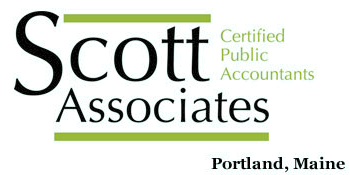Scott Associates, CPAs | CONTACT US TODAY (207) 772-0441
Want More Info?
Our certified professionals in Portland, ME, are ready to help you with your taxes to ensure that you get them right. Whether you are making a financial plan for your business or you need someone to represent your interests during an IRS audit, our professional accountants can help you.
Contact our CPA firm in Portland, ME today for help with filing your taxes!
Contact us
Thanks for your message!
I'll get back to you as soon as I can.
Oops, there was an error sending your message. Please try again later.





